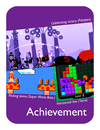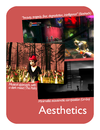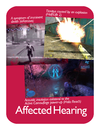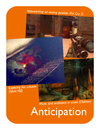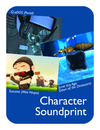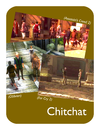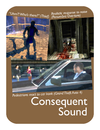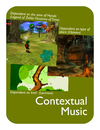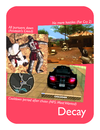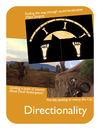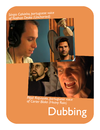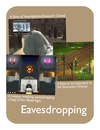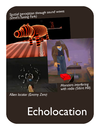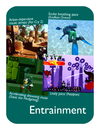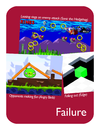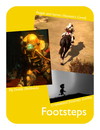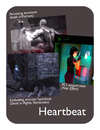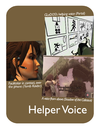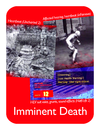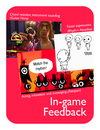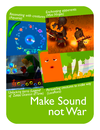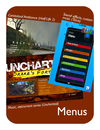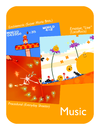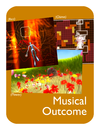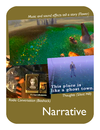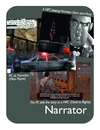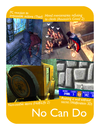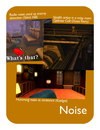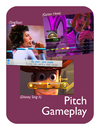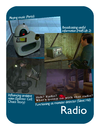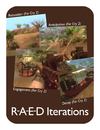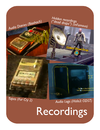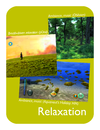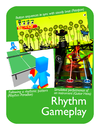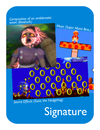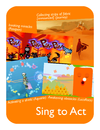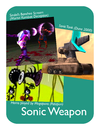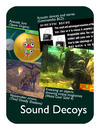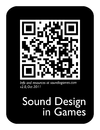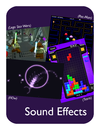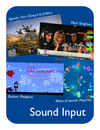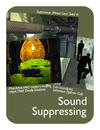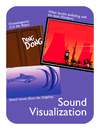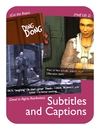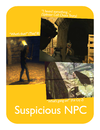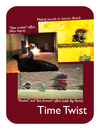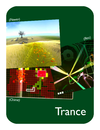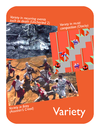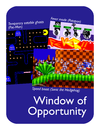Main Page
Sound Design in Games

An approach based on Design Patterns and assisted by a Deck of Cards
| An approach to Sound Design in Games based on Design Patterns and assisted by a Deck of Cards, strongly influenced by Acoustic Ecology and subject to the principle that Sound Design in Games benefits from being embedded in the overall Game Design. |
Version 2.0 of the deck consists of 77 cards, each representing an homonymous design pattern from the collection:
List
Achievement ![]() , Acoustic Ecology
, Acoustic Ecology ![]() , Address Others
, Address Others ![]() , Aesthetics
, Aesthetics ![]() , Affected Hearing
, Affected Hearing ![]() , Ambiance
, Ambiance ![]() , Anticipation
, Anticipation ![]() , Awareness
, Awareness ![]() , Beacon Locator
, Beacon Locator ![]() , Breath
, Breath ![]() , Character Soundprint
, Character Soundprint ![]() , Chitchat
, Chitchat ![]() , Consequent Sound
, Consequent Sound ![]() , Contextual Music
, Contextual Music ![]() , Cutscenes
, Cutscenes ![]() , Death
, Death ![]() , Decay
, Decay ![]() , Dialogue
, Dialogue ![]() , Diegetic Music
, Diegetic Music ![]() , Directionality
, Directionality ![]() , Dubbing
, Dubbing ![]() , Eavesdropping
, Eavesdropping ![]() , Echolocation
, Echolocation ![]() , Emotional Script
, Emotional Script ![]() , Engagement
, Engagement ![]() , Entrainment
, Entrainment ![]() , Failure
, Failure ![]() , Foley
, Foley ![]() , Foley Music
, Foley Music ![]() , Footsteps
, Footsteps ![]() , Grunts
, Grunts ![]() , Heartbeat
, Heartbeat ![]() , Helper Voice
, Helper Voice ![]() , Hurry Up!
, Hurry Up! ![]() , Identification
, Identification ![]() , Imminent Death
, Imminent Death ![]() , In-game Feedback
, In-game Feedback ![]() , Levelled Performance
, Levelled Performance ![]() , Make Sound not War
, Make Sound not War ![]() , Menus
, Menus ![]() , Music
, Music ![]() , Musical Outcome
, Musical Outcome ![]() , Narrative
, Narrative ![]() , Narrator
, Narrator ![]() , No Can Do
, No Can Do ![]() , Noise
, Noise ![]() , Ouch!
, Ouch! ![]() , Pitch Gameplay
, Pitch Gameplay ![]() , R-A-E-D Iterations
, R-A-E-D Iterations ![]() , Radio
, Radio ![]() , Recordings
, Recordings ![]() , Relaxation
, Relaxation ![]() , Revelation
, Revelation ![]() , Rhythm Gameplay
, Rhythm Gameplay ![]() , Say that Again
, Say that Again ![]() , Seeking for PC
, Seeking for PC ![]() , Shout and Yell
, Shout and Yell ![]() , Signature
, Signature ![]() , Silence
, Silence ![]() , Sing to Act
, Sing to Act ![]() , Sonic Weapon
, Sonic Weapon ![]() , Sound Decoys
, Sound Decoys ![]() , Sound Design in Games
, Sound Design in Games ![]() , Sound Effects
, Sound Effects ![]() , Sound Input
, Sound Input ![]() , Sound Suppressing
, Sound Suppressing ![]() , Sound Visualization
, Sound Visualization ![]() , Stealth
, Stealth ![]() , Subtitles and Captions
, Subtitles and Captions ![]() , Suspicious NPC
, Suspicious NPC ![]() , Thoughts
, Thoughts ![]() , Time Twist
, Time Twist ![]() , Title Screens
, Title Screens ![]() , Trance
, Trance ![]() , Unaware NPC
, Unaware NPC ![]() , Variety
, Variety ![]() , Voice Acting
, Voice Acting ![]() , Window of Opportunity
, Window of Opportunity ![]() .
.
Empowering small game developers to perform sound design
Expertise in sound design for games is mainly a privilege of senior designers. The broad community of independent game developers remains mostly challenged by small budgets and scarce know how, while trying to integrate sound in their games. The empowerment of a broader community of developers could unleash a massive creative potential, with results in the form of innovative sound design ideas and further development of the body of knowledge.
A pattern language has the potential to contribute to such an emancipatory movement as it has proven to be a format addressable by experts and non-experts alike. Patterns are collectively authored through the inventory, translation and re-synthesis of current practice and know-how. This methodology has been successfully adopted in other domains where similar concerns were observed, including in game design and auditory displays.
Patterns and Cards
We are proposing a debuting collection of patterns for sound design in games. The patterns were harvested and synthesized under the influence of a set of guidelines, which in turn build upon an interdisciplinary interpretation for sound design. This is also in harmony with an holistic perspective on game design which implies, for instance, that sound design in games is in fact integral to game design. Game design sensitive to sound design opportunities has several benefits: the space of possibilities is enlarged, sound becomes fitted rather then superimposed, and the game product may provide a richer experience with this integration.
While refining and growing the pattern collection, we found the interest in conceiving instruments that could be effective in expediting and sustaining the interfacing between the practitioners and the pattern language, beyond the customary referential support in text forms. This deck of physical cards aims at such purposes. Practitioners may appreciate a presentation of potential sound explorations in a format that is literally handy, with no need to be familiar with the formalism of design patterns.
